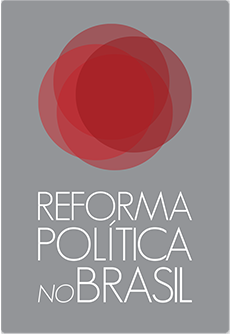MLA Blog Citation Format: Literature and Humanities Reference Standards
When citing blogs in the context of literature and humanities, it's crucial to follow the MLA citation format closely. You need to consider core elements like the author's name and the post title. Proper citations aren’t just a formality; they enhance your scholarly work and ensure you give credit where it’s due. But what are the specific guidelines for in-text citations? Let's explore those next.
Understanding MLA Blog Citation Format
To cite a blog in MLA format, follow the guidelines established by the MLA style's core elements.
Start with the author's name, followed by the title of the blog post in quotation marks. Next, italicize the title of the blog (the container title), and include the publisher if it's available.
You should then provide the publication date and conclude with the URL, omitting "http://" or "https://". If there's no author for the post, begin the citation with the title instead.
It's important to verify the publication date for accuracy. For in-text citations, use the author's last name or the abbreviated title if there's no author present.
Adhering to proper citation format enhances the credibility of your sources.
Core Elements of MLA Citations
The foundation of any solid MLA citation is built upon its core elements. To create an effective citation, include the author's name, the title of the source, the title of the container, other contributors, version, number, publisher, published date, and location, following this specific order.
This structured methodology facilitates the arrangement of citations alphabetically in the Works Cited list. Each element must be punctuated correctly to improve clarity and readability.
For standalone works, titles should be italicized, whereas titles of shorter works should be enclosed in quotation marks. Additionally, when citing online sources, it's important to list the URL without the "http://" or "https://" prefix, in accordance with MLA formatting standards.
This consistent approach ensures that citations are clear and allow readers to locate sources effectively.
Citing Specific Sources in MLA
When citing a blog post in MLA format, it's important to include specific details for accuracy and clarity.
Begin with the author's last name, followed by their first name. Next, place the title of the blog post in quotation marks. After that, italicize the title of the entire blog (the container), and include the name of the publisher if one is provided.
Then, include the publication date formatted as Day Month Year, followed by the URL without "http://" or "https://." In cases where there are multiple authors, the first author's name should be presented in reverse order, while subsequent authors should be listed in normal order.
This structured approach will assist in creating a correct Works Cited entry for the citation.
In-Text Citation Guidelines for Blogs
In-text citations for blog posts are designed to be clear and efficient, allowing for effective referencing of sources.
When citing, include the author's last name in parentheses following the referenced information. If the author’s name is incorporated into the text, use the paragraph number instead, formatted as follows: "Smith par. 4."
For posts authored by multiple individuals, list their last names in the order they appear, separated by commas.
In cases where the author's identity isn't known, utilize the title of the blog post.
It's essential to ensure that all in-text citations correspond with the full entries in your Works Cited list, which should include the author's name, the title of the blog post, the publication date, and the relevant URL.
Importance of Accurate Citing
Accurate citation is a fundamental aspect of academic writing, contributing to its integrity and credibility. When utilizing MLA style for citations, it's essential to include specific information such as the author's name and the title of the source. This allows readers to trace the original materials, thereby verifying the information presented and consulting the accompanying Works Cited list.
Proper citation practices also honor intellectual property rights and mitigate the risk of unintentional plagiarism by acknowledging the contributions of original authors.
By employing quotation marks for direct quotes and adhering to MLA guidelines, scholars can strengthen their academic work. Furthermore, accurate citations facilitate richer academic discourse, enabling others to investigate related literature and engage thoughtfully with the ideas put forth.
Accessing Resources for MLA Style
Accessing reliable resources for MLA style is important for effectively managing citations in academic writing.
The MLA Handbook, 9th edition, outlines necessary guidelines for citing sources, creating in-text citations, and compiling a Works Cited page. Notably, Purdue OWL offers detailed explanations and formatting guidelines that can aid in understanding these requirements.
Dalhousie University's MLA Quickguide presents a concise overview of MLA citations, while Simon Fraser University’s guide specifically addresses the citation of Canadian government documents.
Utilizing these resources can assist writers in accurately referencing source material, thereby strengthening the quality and credibility of their work.
Conclusion
In summary, mastering the MLA blog citation format is essential for your academic journey in literature and humanities. By understanding the core elements and proper citation practices, you can ensure that you're giving credit to original authors while enhancing the clarity of your work. Accurate citations not only bolster your credibility but also help your readers locate your sources effectively. So, keep these guidelines in mind and access resources to refine your MLA skills—it's well worth the effort!
 HOME
HOME Centro de estudos socias - América Latina
Centro de estudos socias - América Latina Programa de formação de Conselheiros Nacionais
Programa de formação de Conselheiros Nacionais Projeto República
Projeto República Instituto de Pesquisa Aplicada
Instituto de Pesquisa Aplicada







